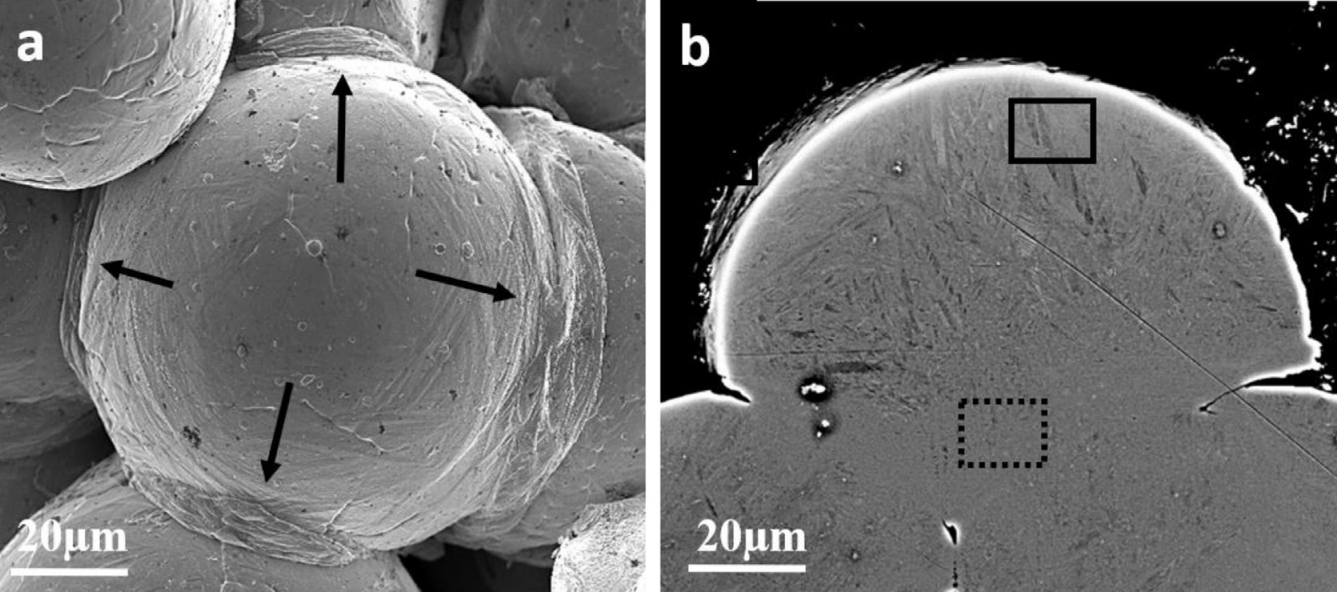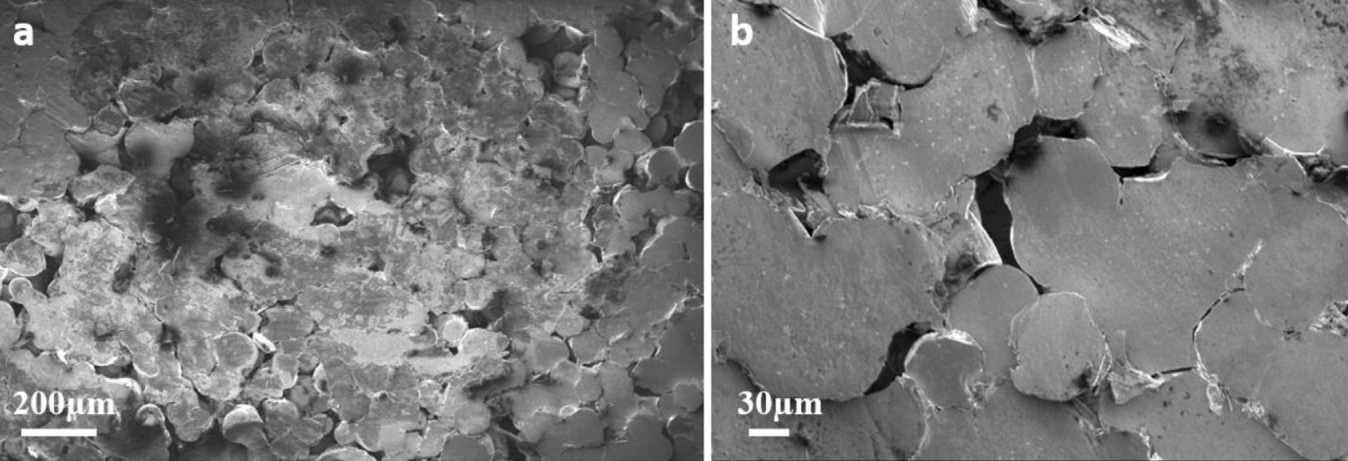A team of researchers from MIT, Cornell University, and others have explored a new method of 3D printing with Ti64 powder.
The cold spraying technique operates at a temperature far below that of titanium’s melting point, instead utilizing kinetic energy as the primary energy source. As such, the metal powder can be deposited at supersonic speeds to form solid-state bonding and create porous structures, resulting in improved mechanical properties and biocompatibility with bone-enveloping preosteoblast cells.

The limitations of high-temperature 3D printing
Laser-based 3D printing processes work by melting successive layers of feedstock on top of each other in thin layers. While this works, the high-temperature nature of the techniques can have detrimental effects on the final part.
For example, parts fabricated via powder bed fusion often struggle with large internal residual stresses, whereby the cyclic heating and cooling caused by the scanning laser can generate shear stresses within a 3D printed component. In extreme scenarios, these residual stresses can be very destructive, warping, distorting, and cracking the part.
Cold spraying is designed to avoid heat-related problems altogether, instead accelerating powder particles to supersonic impact velocities of around 600m/s out of a de Laval nozzle. The idea is to give the jetted material just enough kinetic energy to fuse with the substrate below. In the case of Ti64, the cold spraying occurs at around 800 – 900°C, far below the material’s melting point of 1626°C. At this operating temperature, the metal is soft enough for plastic deformation to take place, but not so soft that the titanium loses its structural integrity once sprayed on the substrate.

Cold spraying Ti64
To test the technique with titanium alloy, the team quite simply conducted a number of basic deposition studies with the material. They found that they could spatially control the porosity of the deposits with modifications to the powder impact velocity, achieving a maximum porosity of 30%.
It was also found that cold spraying the material could result in mechanical properties superior to those of other laser-based 3D printing techniques. Specifically, the researchers determined an apparent compressive yield strength of 535MPa, which is reportedly a whole 42% higher than high-temperature DED. The team also states that this compressive strength could be improved further with post-printing heat treatments.
Finally, owing to the porous nature of the deposits, the cold sprayed Ti64 was proven to be biocompatible with MC3T3-E1 SC4 murine preosteoblast cells. This, of course, cements its viability for use in bone implants, a very common application of the material both in and out of the additive manufacturing sphere. Ultimately, the researchers were able to demonstrate that an alternative single-step solid-state 3D printing process was capable of producing biocompatible metal parts with higher strengths than its more conventional high-temperature counterparts, boding well for the future of cold spraying.

Further details of the study can be found in the paper titled ‘Solid-state additive manufacturing of porous Ti-6Al-4V by supersonic impact’. It is co-authored by Atieh Moridi et al.
In a similar study, researchers from the Delft University of Technology were able 3D print a porous titanium bone implant with antibacterial properties. Again made of Ti64, the implant was biofunctionalized using a method called plasma electrolytic oxidation, whereby the team loaded the implant with strontium and silver nanoparticles, making it resistant to Staphylococcus aureus bacteria.
Elsewhere, researchers from Ontario-based Mohawk College and McMaster University became the first to investigate the suitability of Ti-5553, an unconventional titanium alloy, for 3D printed bone implants. The team concluded that Ti-5553 performed very similarly to the well-established Ti64, suggesting a strong potential for Ti-5553 as a 3D printed bone implant material.
Subscribe to the 3D Printing Industry newsletter for the latest news in additive manufacturing. You can also stay connected by following us on Twitter and liking us on Facebook.
Looking for a career in additive manufacturing? Visit 3D Printing Jobs for a selection of roles in the industry.
Featured image shows SEM imaging of 3D printed samples post-fracture. Image via MIT.



